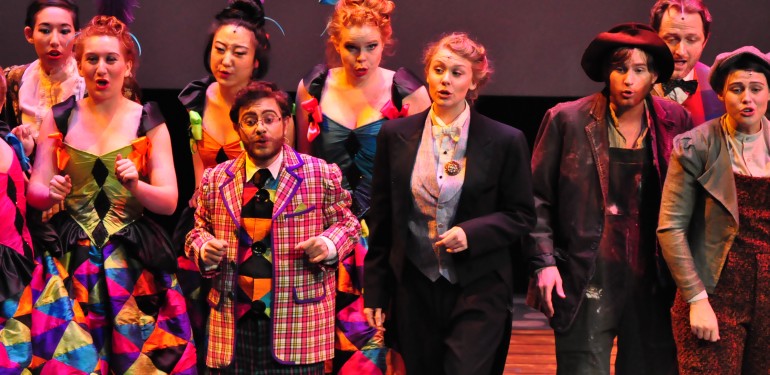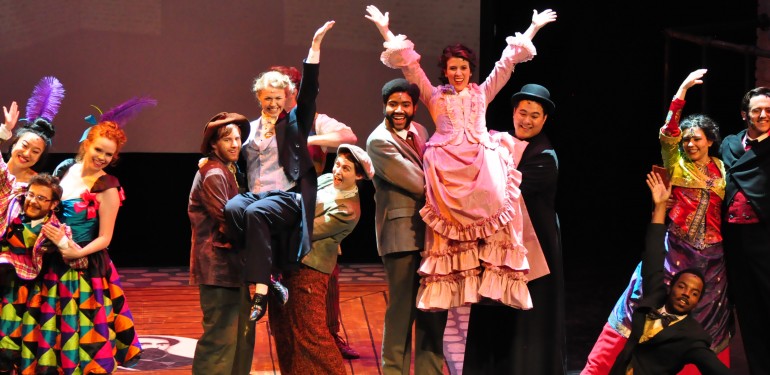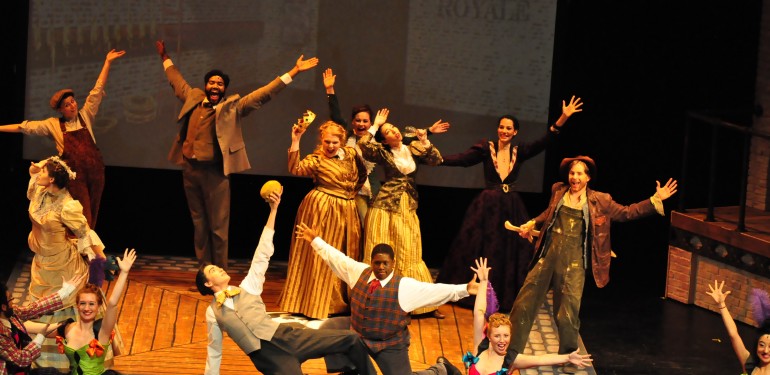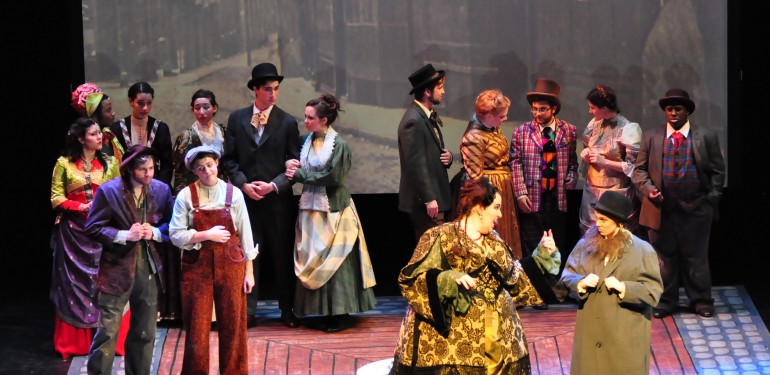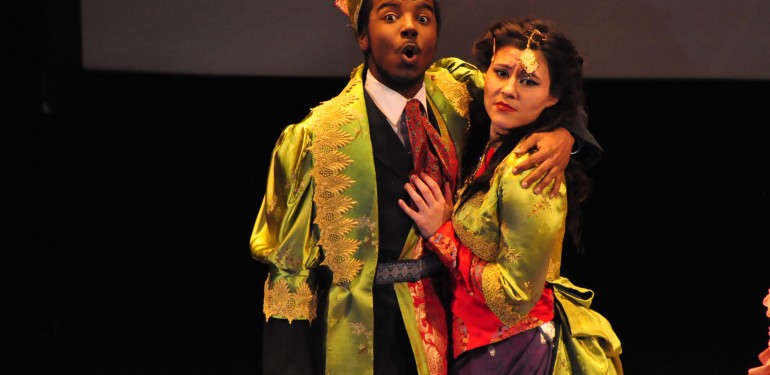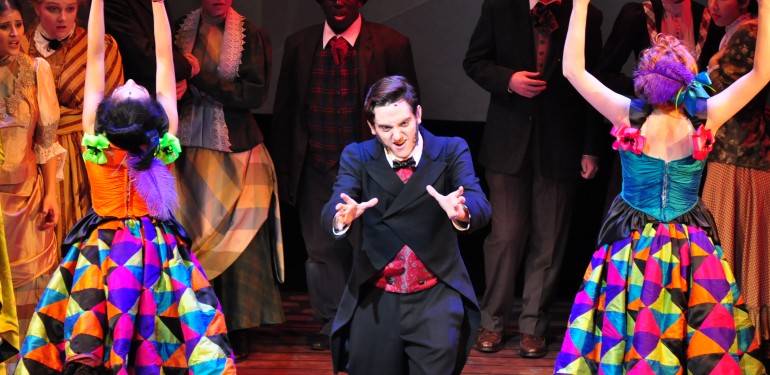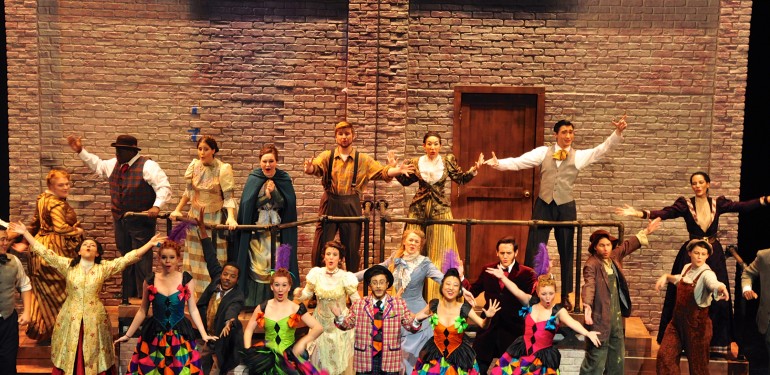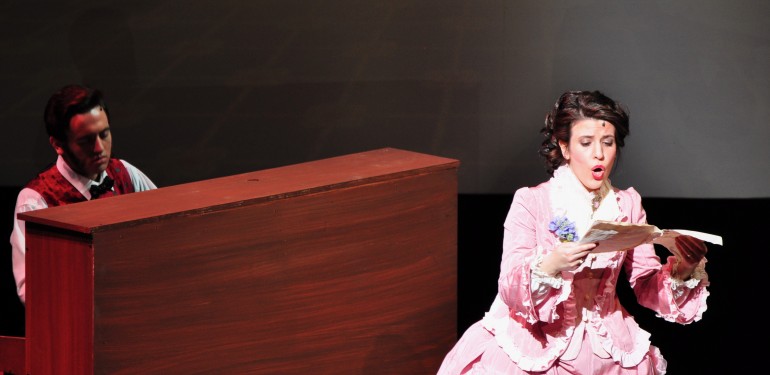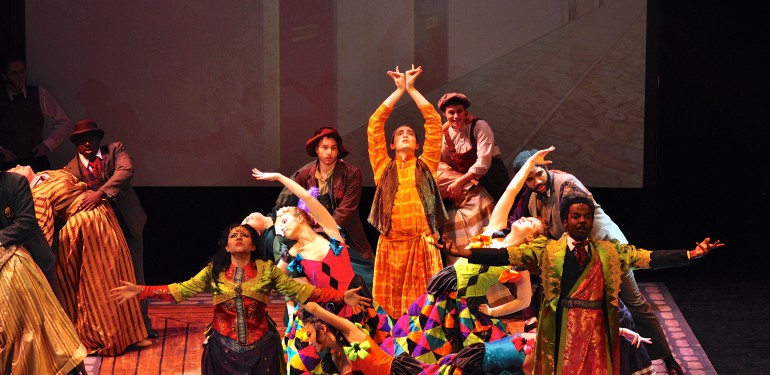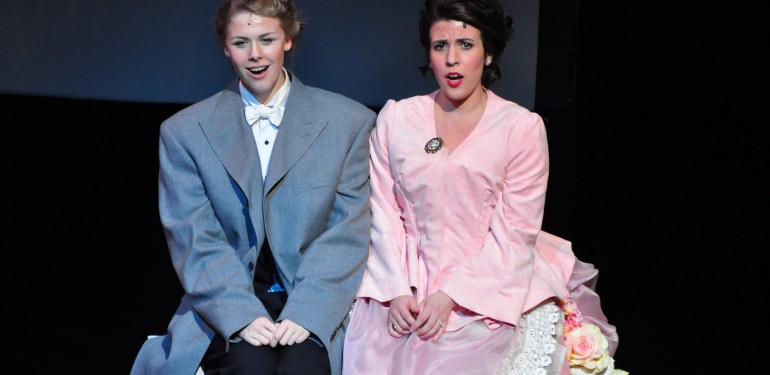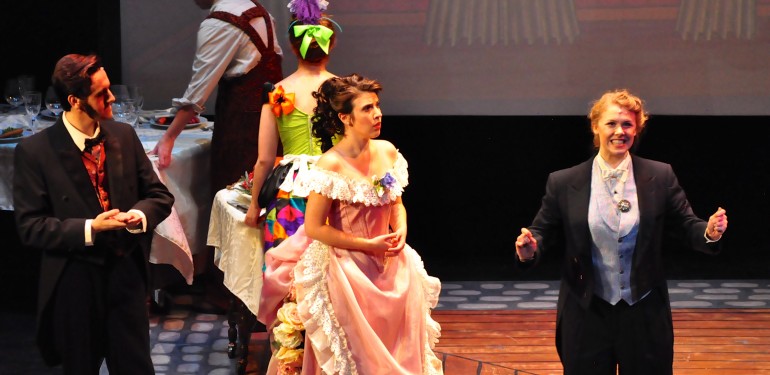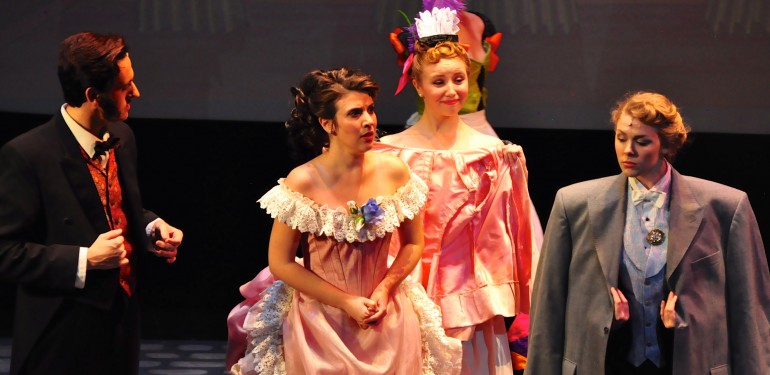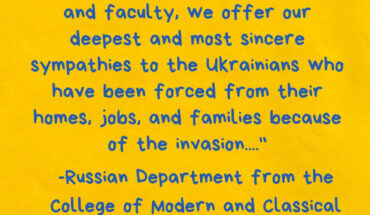Over 200 props, a 35-piece orchestra, 28 actors, 7 stage managers and collaboration among 4 different university departments creates a large musical.
Then add ten points where the audience can vote and over 100 possible plot endings, and the show could become chaos.
This coming weekend, George Mason University’s School of Theatre and the School of Music present “The Mystery of Edwin Drood.” The musical, written by Rupert Holmes, is based off of Charles Dickens’ unfinished novel of the same name.
It has two stories to it, a show within a show. There is the show of actors that takes place in the Music Hall Royale in London in the 1890s. This is the story that the audience will see when they enter the theater. The actors in the music hall are then performing “The Mystery of Edwin Drood,” which takes place in a small English town in the 1870s.
Junior Alexandra Bunger-Pool is playing Alice Nutting, a guest artist to the Music Hall and the leading male impersonator in London. Nutting is “playing” Edwin Drood.
“When you see the show, on the floor space, there’s a box and it’s painted and it has wood and cobblestone in the middle of the stage. The box is the world of Drood,” said Blake Taft, a junior and the assistant stage manager. “So all of the Drood things happen in the box. Then the Music Hall Royale is in front of the box or on the side of the box.”
Within this box, the actors must not only act as their second character, but also keep in mind another style of acting, called melodrama, that was popular in the 1870s.
“So [we] are performing in the classic melodramatic style, which has completely gone out of style now a days. Our theater department largely teaches Stanislavski, so that’s just how we’re all performing by default. Our director Ken has to continually remind us that we’re not going for realism,” Bunger-Pool said. “For example, whenever you speak a line, you should be delivering it straight to the audience. And especially having gone through a few years of training here, and learning something completely different, it’s just so hard to keep that in your head.”
“Drood” has another complication to it. Since Dickens never finished the novel, there is no known ending. The playwright decided to make the show a choose-your-own-ending musical. The audience is asked to vote on various plot points to unravel the ending of the show.
“The big multimedia aspect that we’re doing is we’re incorporating more than the usual voting for this. In past productions of this show, it’s either done during intermission or specifically during the show and it says ‘let’s vote now!’ It was originally done that you only voted on three outcomes. Those were the [identity of the] lovers, the murderer and the detective,” said Taft, who has been in charge of handling the smart technology. “We’ve changed this and we have about 10 or 11 outcomes that you can vote on. Seven of those outcomes are voted on using cellphones.”
The audience will get to vote on aspects like what a character should wear, what sound cue is heard when walking through a graveyard or if the audience will applaud a certain character.
Some of the other votes will involve verbal reactions from the audience to interact with the actors on stage.
In fact, the moment the audience enters the theater’s house they will be asked to participate. The actors, playing their Music Hall Royale characters, will be in the house acting prepared bits and discussing the voting process with the audience.
“Just as much as we’re putting ourselves out there and you as audience members are putting yourselves out there to fully immerse yourself in the experience and fully enjoy it without begin nervous about what we’re doing. Because we are in the audience, the first song, the first 45 minutes we are in the audience talking to you. We’re making jokes with you, we’re interacting with you,” senior Rachel Harrington, said. “The first song I am singing from the balcony. I am in the balcony, I’m with everyone. So from the moment you enter the theater, we want you to be in the story with us. We’re not asking you to just watch it, we’re asking you to be in it.”
Harrington is playing Angela Prysock, the “grand dame” of the Music Hall Royale. Prysock is playing Princess Puffer who runs an opium den.
Use of projections is also integral technology to the show. Taft elaborated that over the course of “Drood,” scenery will be projected onto the brick walls, and sometimes it will be used to overlay the actors, to demonstrate change and movement.
This and the use of motion capture technology incorporated the game design and film and video studies programs.
“There is this very cool scene, where one of our characters is addicted to opium goes to an opium den in London. Then he has an opium dream, and in the original Broadway play he had his dream, and it was sort of a ballet. [A] sort of demonic dance happened around him in his mind,” Director of “Drood” and the School of Theatre Ken Elston said. “We are just going into his mind with motion capture animation and video. So he sees himself doing violence and that’s in animation. And then we back out of the animation and he starts to engage in what’s happening around him, the people, but how that’s translating in his drug addled mind is being projected in the movie.”
Elston used the motion capture technology as a means to represent the “drug induced psyche.” It, along with every concept of the show, serves to push the bounds of theater and to keep the audience involved and entertained.
“Tying the audience in and accentuating the interactivity that’s already in the play and trying to determine how do you make theatre more like a game, because games are very popular,” Elston said. “They suck people in. The theater is trying in a way to compete with them. We have something that games don’t have which is the live interactive component, and so trying to find a show that could let us experiment with that sort of game experience within the show. The show is going to be different every night.”
The “Mystery of Edwin Drood” will be performed at the Center for the Arts from Oct. 24 through Oct. 26 and at the Hylton Performing Arts Center at the Prince William Campus from Oct. 31 through Nov. 1.
Photos by Johannah Tubalado


